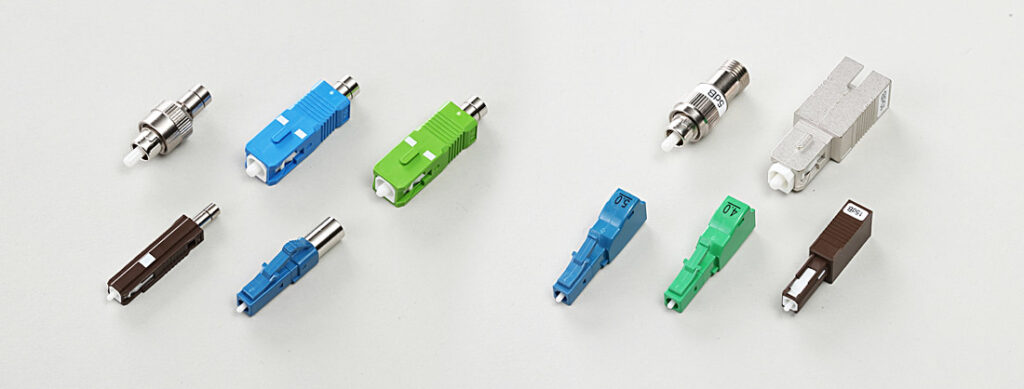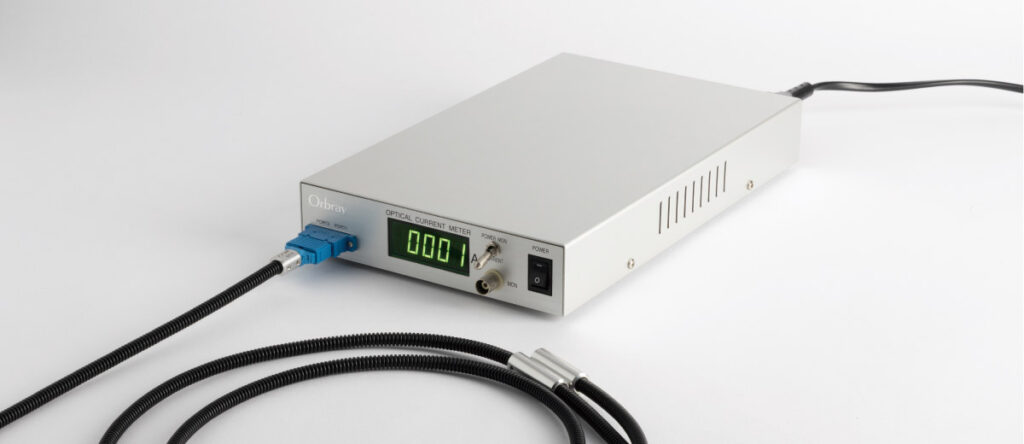Optical filters: Essential components of high-speed, high-volume optical communications systems

Optical filters make it possible to transmit light above or below a given frequency. In more advanced filters, the frequency to be transmitted can be selected as needed. Optical communications and analysis systems that use specific frequencies of light rely on optical filters to cut out or absorb certain frequencies of light.
Table of contents [close]
Sending multiple signals with WDM and optical filters
As access to optical communications continues to expand, so does the need to increase data transmission speed and volume. To meet this need, a method called Wavelength Division Multiplexing (WDM) has become common. Because different wavelengths of light do not interfere with or corrupt each other, it is possible to send multiple wavelengths of light, each carrying a separate signal, down a single optical fiber. There are several forms of WDM. In Dense WDM (DWDM), several dozen to several hundred very high frequency signals are transmitted in a small band of wavelengths. In Course WDM (CWDM), a wider band of wavelengths is used, allowing lower cost equipment to be used.

Operating principle of the WDM technology By <a href="//commons.wikimedia.org/w/index.php?title=User:Xens&action=edit&redlink=1" class="new" title="User:Xens (page does not exist)">Xens</a> - <span class="int-own-work" lang="en">Own work</span>, CC BY-SA 3.0, Link
Several semiconductor lasers (LD) that emit light of different frequencies are used to create various optical signals. The signals are transmitted down a single optical fiber. At the receiving end, the different frequency signals are separated by the filters. Each is read by photodetectors (PD) and converted into electronic signals. In this way, a single optical fiber can act as a bundle of fibers and carry many different transmission signals. Multiplexing wavelength filters are used to separate the different frequencies of optical signals travelling down a single fiber. There are several types of multiplexing filters, such as the dielectric multilayer interference filter and the arrayed waveguide grating filter. Variable optical filters are able to change the frequency of light they pick up and are used to monitor transmission conditions of specific signals.
Variable optical filters
Variable optical filters are able to change the frequencies of light they let through. By varying the range of frequencies that can be transmitted, specific signals from a multi-signal transmission can be isolated and received. There are several types of variable wavelength optical fibers: Fabry-Perot interferometers, diffraction grating, and interference filters.
Fabry-Perot interferometer
Fabry-Perot interferometers are based on highly reflective mirrors. The reflective surfaces are placed very close to each other. As the light signals bounce between the mirrors, the resonance and inference that occur are used to select the desired wavelengths of light.
The incoming light reflects off of the mirrors many times. When the distance between the mirrors matches the wavelength of the light, the reflecting light resonates and the signal increases. At the same time, non-resonant signals cancel each other out and decrease. If the signal is strong enough, it is sent to the photodetector. The distance between the mirrors can be adjusted to select for different frequencies of light.
The mirrors used in these filters are manufactured using MEMS technology and controlled by very tiny voltage inputs. Compact, reliable, and fast light filtering is thus possible.
Diffraction grating optical filters
The diffraction grating type of variable optical filter is an optical filter that separates the incoming light according to the magnitude of diffraction caused by the diffraction grating. Diffraction gratings have very fine irregularities on the surface. Light diffracts when it contacts the surface. The magnitude of diffraction is related to the wavelength of the light. Diffraction angles of each frequency of light are well understood and predictable. By fine-tuning the incident angle of the diffraction grating, it is possible to send light of the chosen wavelength toward a predetermined destination, such as a photodetector. Diffraction grating optical filters can be made using MEMS technology by combining variable angle mirrors and diffraction gratings in a MEMS device.
Interference filter
Like the Fabry-Perot filter, the interference type of variable optical filter uses an interference filter that can selectively transmit a specific signal. As light enters the filter, it interacts with the thin film and causes interference. The interference causes some wavelengths to strengthen and others to weaken. The filter can be preset to strengthen the desired wavelength of light. Unlike the Fabry-Perot filter, each interference filter can only filter for one frequency of light. The variable interference filter is equipped with several filters and mechanically switches between them to select for the desired frequencies.
-
Optical attenuators and terminators: How they work and why they are important

-
Silicon Photonics: Why is it essential for 5G?

-
What is LiDAR? How it works, technologies, and applications

-
Optical Fiber Current Sensors

-
Lensed Fibers: Brief introduction to the functions and manufacturing methods

-
What is a Ferrule? : The history and development of the ferrule continues today with its ever pursuit of high accuracy of 1um or less at reduced costs



